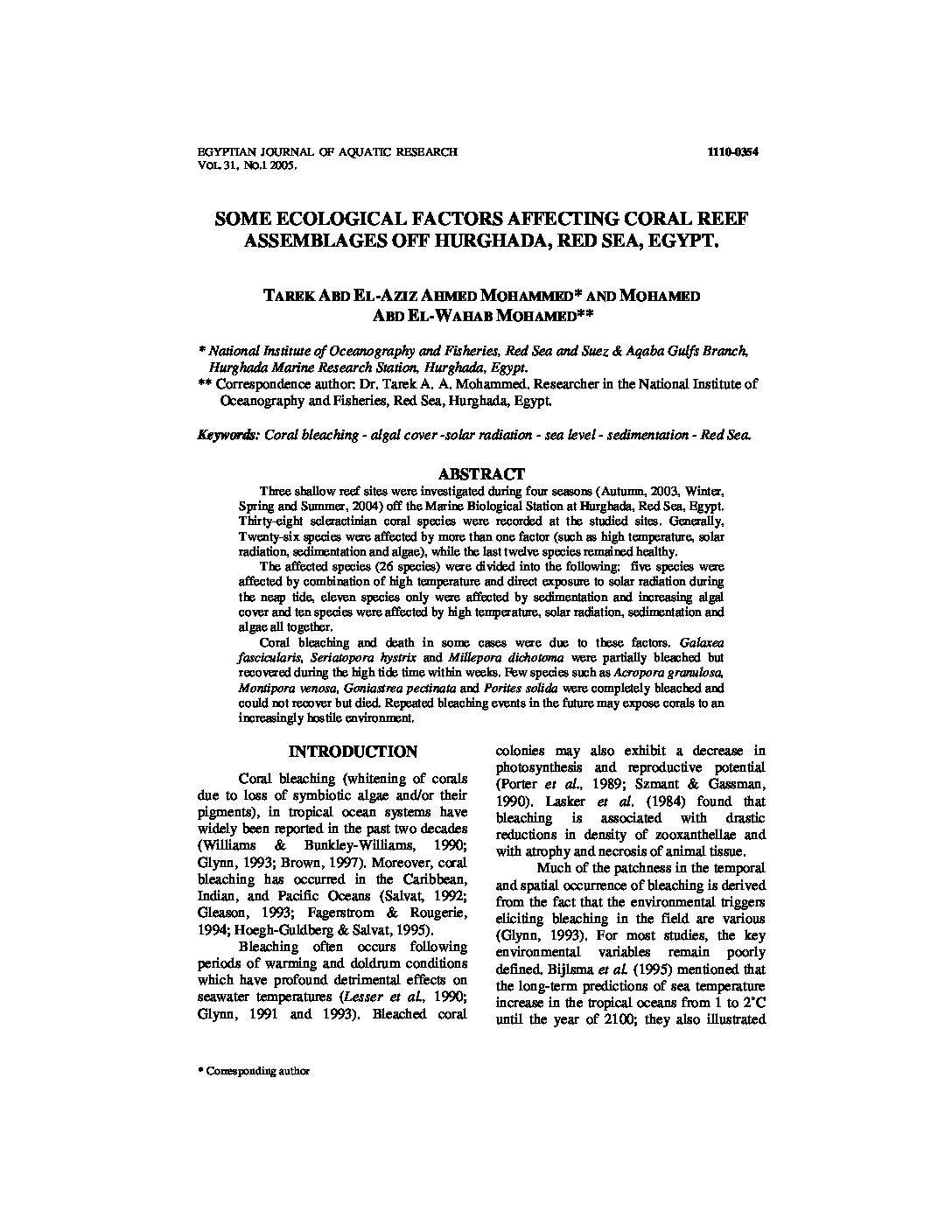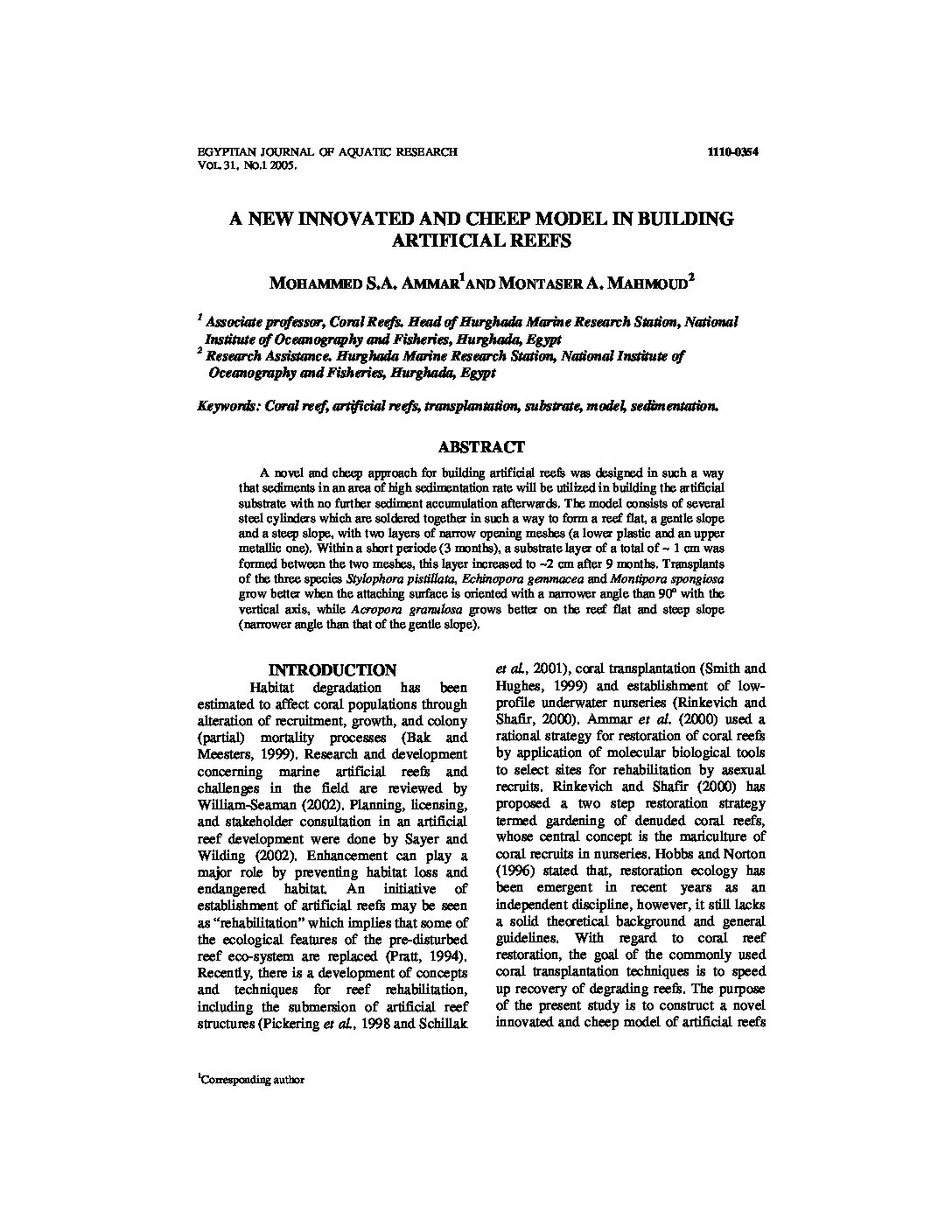Categories
vol-31SOME ECOLOGICAL FACTORS AFFECTING CORAL REEF
ASSEMBLAGES OFF HURGHADA, RED SEA, EGYPT.
TAREK ABD EL-AZIZ AHMED MOHAMMED* AND MOHAMED
ABD EL-WAHAB MOHAMED**
* National Institute of Oceanography and Fisheries, Red Sea and Suez & Aqaba Gulfs Branch,
Hurghada Marine Research Station, Hurghada, Egypt.
** Correspondence author: Dr. Tarek A. A. Mohammed. Researcher in the National Institute of
Oceanography and Fisheries, Red Sea, Hurghada, Egypt.
Keywords: Coral bleaching – algal cover -solar radiation – sea level – sedimentation – Red Sea.
ABSTRACT
Three shallow reef sites were investigated during four seasons (Autumn, 2003, Winter,
Spring and Summer, 2004) off the Marine Biological Station at Hurghada, Red Sea, Egypt.
Thirty-eight scleractinian coral species were recorded at the studied sites. Generally,
Twenty-six species were affected by more than one factor (such as high temperature, solar
radiation, sedimentation and algae), while the last twelve species remained healthy.
The affected species (26 species) were divided into the following: five species were
affected by combination of high temperature and direct exposure to solar radiation during
the neap tide, eleven species only were affected by sedimentation and increasing algal
cover and ten species were affected by high temperature, solar radiation, sedimentation and
algae all together.
Coral bleaching and death in some cases were due to these factors. Galaxea
fascicularis, Seriatopora hystrix and Millepora dichotoma were partially bleached but
recovered during the high tide time within weeks. Few species such as Acropora granulosa,
Montipora venosa, Goniastrea pectinata and Porites solida were completely bleached and
could not recover but died. Repeated bleaching events in the future may expose corals to an
increasingly hostile environment.







